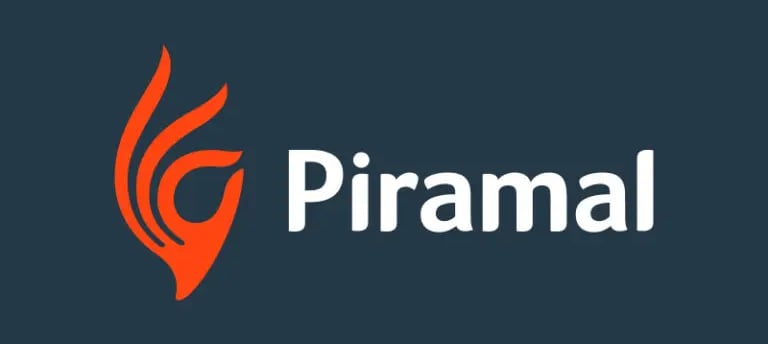Add your promotional text...
Piramal Enterprises: A Mixed Quarter with Promising AIF Recoveries
Synopsis: Piramal Enterprises Ltd. (PIEL) posted a mixed financial performance in Q3 FY25, with net profit significantly impacted by exceptional gains from AIF recoveries. While retail AUM growth and improved asset quality offer optimism, the company faces challenges in sustaining core earnings momentum. Here's an in-depth analysis of its quarterly results and the road ahead.
RESULTS
By Divya Chaudhary
1/28/20253 min read


Piramal Enterprises: Q3 FY25 Performance Overview
Piramal Enterprises Ltd. (PIEL) reported a net profit of ₹386 million for Q3 FY25, a steep decline from ₹1.6 billion in the preceding quarter. However, this figure includes an exceptional gain of ₹3.8 billion from Alternative Investment Fund (AIF) portfolio recoveries, compared to ₹770 million in Q2 FY25.
The management remains optimistic about AIF recoveries, projecting continued gains in Q4 FY25 and FY26, which could provide a cushion against other challenges faced by the company.
Key Financial Metrics
Net Interest Income (NII):
NII saw a year-on-year (YoY) growth of 13%, reaching ₹9.4 billion. This indicates a steady rise in the company’s interest-earning capabilities despite broader industry headwinds.Pre-Provision Operating Profit (PPOP):
PPOP declined by 8% YoY to ₹3.6 billion, reflecting challenges in operational efficiency.Assets Under Management (AUM):
Total AUM grew 11% YoY and 5% quarter-on-quarter (QoQ), signaling steady expansion in the loan portfolio.Wholesale 2.0 AUM: Increased by 13% QoQ to ₹89.2 billion.
Wholesale 1.0 AUM: Declined sharply by 45% YoY and 14% QoQ to ₹104 billion, reflecting the company’s strategic shift away from legacy wholesale lending.
Retail AUM: Showed robust growth of 37% YoY to ₹591 billion, now contributing 75% to the loan book (up from 73% in the previous quarter).
Asset Quality:
Gross Stage 3 (GS3) assets improved by 30 basis points (bps) QoQ to 2.8%.
Net Stage 3 (NS3) assets remained stable at 1.5%.
Stage 3 Provision Coverage Ratio (PCR) declined by 4 percentage points QoQ to 49.3%.
Retail loans overdue by 90+ days past due (DPD) rose slightly by 10 bps QoQ to 0.8%.
Retail Business Driving Growth
PIEL's focus on retail lending has proven fruitful, with Retail AUM witnessing a 37% YoY growth. This strategic pivot has helped the company diversify its loan book, reducing dependency on wholesale lending. Retail now accounts for 75% of the loan portfolio, a significant shift from its previous wholesale-heavy model.
The rise in electric and digital financial products has allowed PIEL to penetrate deeper into consumer markets. However, the marginal uptick in retail delinquency (90+ DPD) to 0.8% suggests room for further improvement in credit risk management.
Challenges in Wholesale Lending
While Wholesale 2.0 AUM saw a QoQ increase of 13%, Wholesale 1.0 AUM continued to decline, dropping by 45% YoY. This contraction is a deliberate effort by PIEL to phase out legacy wholesale lending operations.
Despite these efforts, the transition to a more retail-focused portfolio will take time and poses risks, including potential loss of revenue from the wholesale business.
Improved Asset Quality with Stable Provisions
PIEL’s asset quality has shown improvement, with GS3 assets declining by 30 bps QoQ to 2.8%. However, the Stage 3 PCR decline to 49.3% indicates a reduction in the buffer for absorbing bad debts. Stability in NS3 assets at 1.5% provides some reassurance regarding the overall credit health of the loan book.
Exceptional Gains from AIF Recoveries
The highlight of Q3 FY25 was the ₹3.8 billion gain from recoveries in the AIF portfolio. Management anticipates continued recoveries in Q4 FY25 and FY26, which could bolster the company’s financial performance. However, these exceptional gains are non-recurring and may not contribute to long-term earnings growth.
Outlook and Analyst Recommendations
Despite pockets of strength, PIEL faces challenges in accelerating core earnings growth. The company’s strategic pivot towards retail lending, while promising, requires time to deliver sustainable results.
Motilal Oswal’s research report maintains a "Neutral" rating for PIEL with a revised target price of ₹1,025. Analysts believe that in the near term, catalysts for significant earnings improvement remain limited.
Investment Perspective
For investors, PIEL’s improving asset quality and retail AUM growth are positive indicators. However, the declining contribution from legacy wholesale lending and reliance on exceptional gains pose risks.
Long-term investors may find value in PIEL’s retail-focused strategy, while short-term market participants should closely monitor AIF recoveries and retail delinquency trends.
In conclusion, Piramal Enterprises’ Q3 FY25 performance reflects its ongoing transformation amidst a challenging macroeconomic environment. With a strategic shift towards retail lending and consistent AUM growth, the company is positioning itself for long-term stability. However, near-term hurdles in core earnings growth necessitate cautious optimism.
Investors are advised to adopt a balanced approach, focusing on PIEL’s evolving business model and future growth prospects, while keeping an eye on potential risks in its wholesale and retail portfolios.
